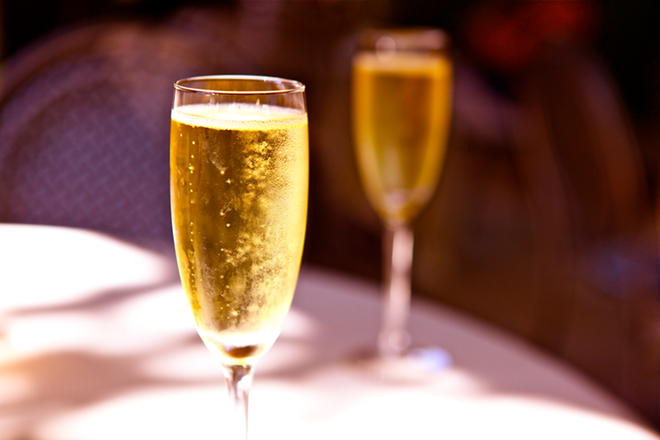
Continuously tasting wines side by side is the best way to learn and educate your palate. And, as with anything worth doing, the more you bring to the experience, the more you enjoy the full depth and breadth of the nuances a bottle has to offer.
This is my third column in a series about gathering friends for a tasting party to explore new wines and how they marry with particular foods. The methodology previously outlined is online, but I'm switching it up a bit because we're not pairing a different food with every wine. Instead, we'll try a category of wines with a particular food.
As a culture, we've come to identify sparkling wine with celebrations, particularly Champagne — which is often used as a generic reference to all bubbly, but refers to wines from the French region 90 miles northeast of Paris. I want you to explore the four major sparkling wine types available across Europe and, if you wish, similar bottlings from wine regions around the world.
Since you need a large number of glasses for this comparative sampling, it's OK to use regular wine glasses instead of flutes. Actually, a Champagne professional I know confesses that he and his colleagues taste with standard wine glasses to allow them to appreciate aromas more fully. The purpose of the flute, after all, is to maintain the carbonation that the winemaker has worked so hard to develop. The important thing to remember is, regardless of your choice, you should try to use identical glasses and not mix and match.
Champagne (France): Any reliable producer will do. Unfortunately, most bottles of true Champagne run about $40, although Costco has a perfectly acceptable Kirkland label at half the price. The remaining styles of sparkling wine are less expensive. To get the most out of your tasting, purchase the wines below close to the same price point. I assume you'll pay more for Champagne, but that'll be your benchmark.
Prosecco (Italy): Steer clear of Asti Spumante, because while it is delicious, it's sweet and essentially for a different sampling. The same is true for Rosa Regale, which is a sweet sparkling red dessert wine.
Cava (Spain): One I like is Segura Viudas.
Sekt (Germany): As with Italian bubbles, make sure you select a dry German wine as there are many sweet variations available. This may be harder to locate.
Feel free to add sparkling wine from New World producers in the United States or Australia. Some to consider on the budget end are Domaine Chandon, Mumm Napa, Domaine Ste. Michelle and Gruet. If you wish to explore domestic bubbles head to head with French Champagne, look for J Vineyards & Winery, Domaine Carneros or Iron Horse. You may even incorporate pink rosé versions to vary your to-do list. They're normally fruitier, fuller bodied and, therefore, not bone dry. However, they're also my personal favorites and beg to be included.
For this tasting, my preferred food match would be brined, cold-smoked smoked salmon, often referred to as lox. If that's not to your liking, you could substitute with sushi (soy is OK, but light on the wasabi), potato chips or a simple egg dish. Sparkling wine goes well with each.
You can never drink bubbles too often.

